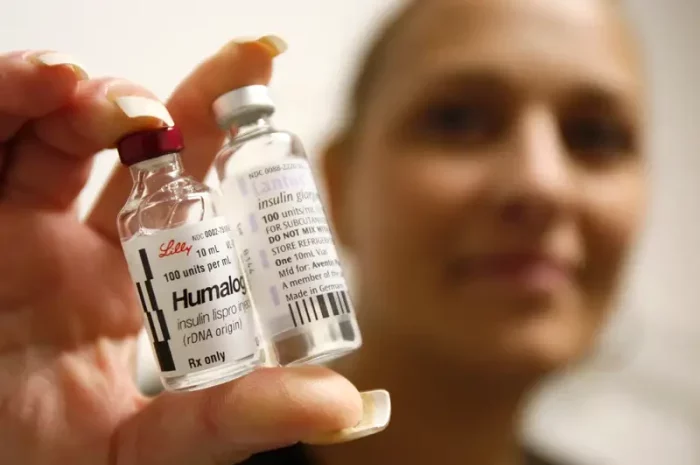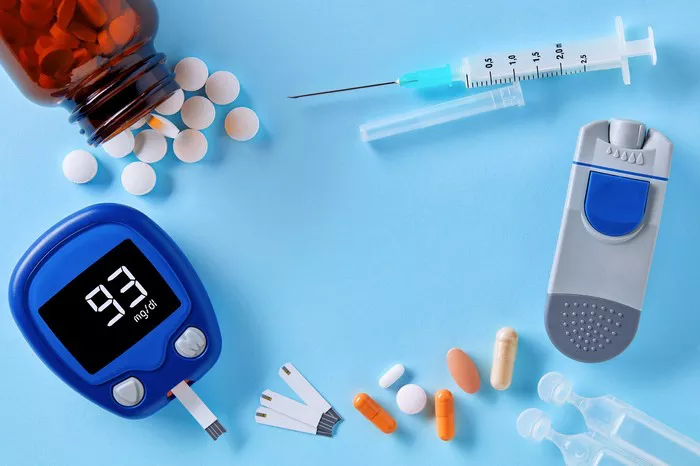Type 2 diabetes is a chronic condition that affects the way the body processes blood sugar (glucose). Unlike type 1 diabetes, which is an autoimmune condition, type 2 diabetes is largely preventable through lifestyle changes. Given the rising prevalence of type 2 diabetes worldwide, understanding the steps to avoid this condition is crucial. This article delves into the most effective strategies to prevent type 2 diabetes, including dietary choices, physical activity, weight management, stress reduction, and regular medical check-ups.
Understanding Type 2 Diabetes
Type 2 diabetes occurs when the body becomes resistant to insulin or when the pancreas is unable to produce enough insulin. Insulin is a hormone that allows glucose to enter cells, where it can be used for energy. When insulin function is impaired, glucose builds up in the bloodstream, leading to high blood sugar levels.
The primary risk factors for type 2 diabetes include obesity, a sedentary lifestyle, poor diet, age, and family history. However, even people with a genetic predisposition can often delay or avoid the onset of type 2 diabetes through proactive lifestyle changes.
1. Maintain a Healthy Diet
A balanced diet is fundamental in preventing type 2 diabetes. Here are some dietary principles to follow:
Prioritize Whole Foods
Whole foods, such as fruits, vegetables, whole grains, lean proteins, and healthy fats, are rich in nutrients and fiber. These foods help regulate blood sugar levels and improve overall health.
Reduce Sugar and Refined Carbs
Foods high in sugar and refined carbohydrates, like sugary beverages, white bread, pastries, and many processed snacks, cause rapid spikes in blood sugar levels. Limiting these foods can prevent insulin resistance and weight gain.
Choose Low Glycemic Index (GI) Foods
Low GI foods, such as legumes, nuts, seeds, and most vegetables, cause a slower rise in blood sugar levels. These foods help maintain stable blood sugar and insulin levels, reducing the risk of type 2 diabetes.
Incorporate Healthy Fats
Healthy fats, found in avocados, nuts, seeds, and olive oil, can improve insulin sensitivity. However, it’s important to consume these fats in moderation.
Stay Hydrated
Drinking plenty of water helps maintain optimal bodily functions, including insulin regulation. Avoid sugary drinks, which contribute to weight gain and increased diabetes risk.
Moderate Portion Sizes
Eating large portions can lead to weight gain and increased blood sugar levels. Using smaller plates, paying attention to hunger cues, and avoiding distractions while eating can help control portion sizes.
Plan Balanced Meals
Aim to fill half your plate with non-starchy vegetables, a quarter with lean protein, and a quarter with whole grains or starchy vegetables. This balanced approach helps manage blood sugar levels effectively.
2. Engage in Regular Physical Activity
Physical activity plays a crucial role in preventing type 2 diabetes by improving insulin sensitivity, aiding weight management, and enhancing overall health. Here are key exercise guidelines:
Aim for Consistency
Engage in at least 150 minutes of moderate-intensity aerobic exercise, such as brisk walking, cycling, or swimming, each week. Alternatively, 75 minutes of vigorous-intensity exercise, such as running or high-intensity interval training (HIIT), can also be beneficial.
Incorporate Strength Training
Strength training exercises, such as weight lifting or resistance band workouts, should be done at least two days a week. Building muscle mass helps increase metabolic rate and improve insulin sensitivity.
Include Flexibility and Balance Exercises
Practices like yoga and Pilates enhance flexibility and balance, reducing the risk of injuries and improving overall physical function.
Stay Active Throughout the Day
Avoid prolonged periods of sitting. Incorporate movement into your daily routine by taking short walks, using stairs instead of elevators, and stretching regularly.
3. Manage Your Weight
Maintaining a healthy weight is one of the most effective ways to prevent type 2 diabetes. Here are strategies to achieve and maintain a healthy weight:
Set Realistic Goals
Aim for gradual weight loss, typically 1-2 pounds per week. Setting achievable goals helps maintain motivation and long-term success.
Track Your Progress
Keep a journal of your food intake, physical activity, and weight. Monitoring your progress helps identify patterns and make necessary adjustments.
Seek Support
Consider joining a weight loss group or working with a healthcare professional, such as a dietitian or personal trainer, to receive guidance and support.
Focus on Behavior Changes
Rather than just focusing on the scale, emphasize behavior changes, such as adopting healthier eating habits and increasing physical activity.
Avoid Fad Diets
Steer clear of fad diets that promise quick weight loss. These diets are often unsustainable and can lead to nutrient deficiencies.
4. Manage Stress
Chronic stress can contribute to insulin resistance and unhealthy behaviors that increase diabetes risk. Here are ways to manage stress effectively:
Practice Mindfulness and Relaxation Techniques
Activities such as meditation, deep breathing exercises, and progressive muscle relaxation can help reduce stress levels.
Stay Active
Regular physical activity is a powerful stress reducer. Exercise releases endorphins, which improve mood and reduce stress.
Get Adequate Sleep
Poor sleep can increase stress and disrupt insulin regulation. Aim for 7-9 hours of quality sleep each night. Establish a regular sleep schedule and create a restful sleeping environment.
Connect with Others
Social support is crucial for stress management. Spend time with family and friends, join support groups, or engage in community activities.
Set Realistic Expectations
Avoid overcommitting and set realistic goals to reduce stress. Prioritize tasks and learn to say no when necessary.
5. Regular Medical Check-Ups
Regular medical check-ups are essential for early detection and management of type 2 diabetes. Here’s what you need to do:
Schedule Routine Blood Tests
Get your blood sugar levels checked regularly, especially if you have risk factors for diabetes. Hemoglobin A1C, fasting blood glucose, and oral glucose tolerance tests are commonly used to screen for diabetes.
Monitor Blood Pressure and Cholesterol Levels
High blood pressure and abnormal cholesterol levels increase the risk of diabetes complications. Regular monitoring and management of these conditions are crucial.
Discuss Family History
Inform your healthcare provider about your family history of diabetes. This information helps assess your risk and determine appropriate preventive measures.
Follow Medical Advice
If your healthcare provider identifies prediabetes or other risk factors, follow their recommendations closely. This may include lifestyle changes, medications, or regular monitoring.
Stay Informed
Stay updated on the latest guidelines and research related to diabetes prevention. Knowledge empowers you to make informed decisions about your health.
6. Avoid Smoking and Limit Alcohol Consumption
Both smoking and excessive alcohol consumption increase the risk of type 2 diabetes. Here’s why and how to address these habits:
Quit Smoking
Smoking increases insulin resistance and inflammation, contributing to diabetes development. Seek support through smoking cessation programs, counseling, or medications to quit smoking.
Limit Alcohol Intake
Excessive alcohol consumption can lead to weight gain and disrupt blood sugar levels. If you choose to drink, do so in moderation. This means up to one drink per day for women and up to two drinks per day for men.
7. Consider Medication if Necessary
In some cases, medication may be necessary to prevent the progression from prediabetes to diabetes. Here’s what you should know:
Discuss Options with Your Healthcare Provider
If lifestyle changes alone are not sufficient, your healthcare provider may recommend medications such as metformin. These medications help improve insulin sensitivity and reduce blood sugar levels.
Adhere to Prescribed Treatments
If prescribed medication, take it as directed. Consistency is key to managing blood sugar levels effectively.
8. Educate Yourself and Others
Raising awareness about diabetes prevention is crucial. Here’s how you can contribute:
Stay Informed
Keep yourself updated on diabetes research and prevention strategies. Reliable sources include the American Diabetes Association, World Health Organization, and reputable medical journals.
Share Knowledge
Educate family, friends, and community members about the importance of diabetes prevention. Share resources, organize workshops, or participate in community health events.
Advocate for Healthier Environments
Support initiatives that promote healthier food options, physical activity, and stress reduction in schools, workplaces, and communities.
Be a Role Model
Lead by example. Demonstrate healthy lifestyle choices and encourage others to do the same.
See also:the Underlying Causes of Type 2 Diabetes at the Cellular Level
Conclusion
Preventing type 2 diabetes requires a multifaceted approach, including a balanced diet, regular physical activity, weight management, stress reduction, and regular medical check-ups. By adopting these strategies, individuals can significantly reduce their risk of developing type 2 diabetes and improve their overall health. Education and community support are also essential in creating an environment that promotes healthy living and diabetes prevention. Making these changes can be challenging, but the long-term benefits to your health and quality of life are well worth the effort.
Can People With Type 2 Diabetes Eat Honey?



























